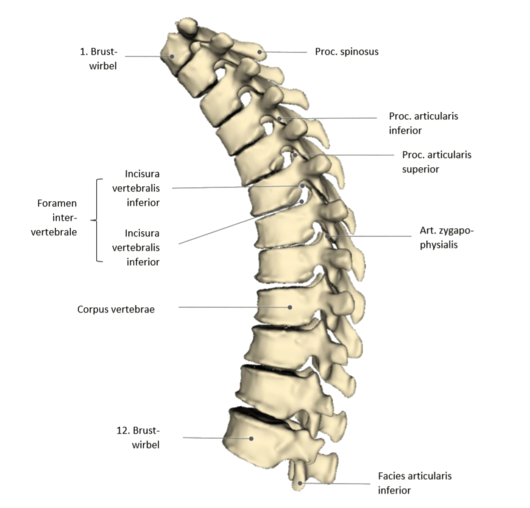Thoracic spine
The spine section between the cervical and lumbar spine is called the thoracic spine'. It has 12 vertebrae and is bent backwards in healthy people, which is called physiological kyphosis. The thoracic vertebrae are stronger than the cervical vertebrae.
In the caudal direction they become stronger and more stable as the body load increases.
The spinous processes on the thoracic spine are long, triangular and lie on top of each other like roof tiles, thus closing the gaps between the vertebral arches.
Through rib-vortex-joints it is possible to move the thorax, which contracts and expands when breathing. At the upper and lower edge of the second to ninth thoracic vertebra there is a flat joint socket, which together with the adjacent thoracic vertebra forms the joint surface for a rib head (intercostal joints).
The upper joint pit for the first rib and a half lower joint pit for the second rib, carries alone the first thoracic vertebra.
In contrast, the tenth thoracic vertebra has only the upper socket for the tenth rib. A whole socket for the eleventh and twelfth ribs ending in the abdominal wall carry the eleventh and twelfth thoracic vertebrae.
Die Brustwirbelsäule zum freien Explorieren
| mit Annotationen | ohne Annotationen|
<segmenter border="1" frameborder="0">https://dornheim.cloud/index.php/apps/segmenter/embedding/view?identifier=txrtIqUS24qp</segmenter>
weiterführende Links
